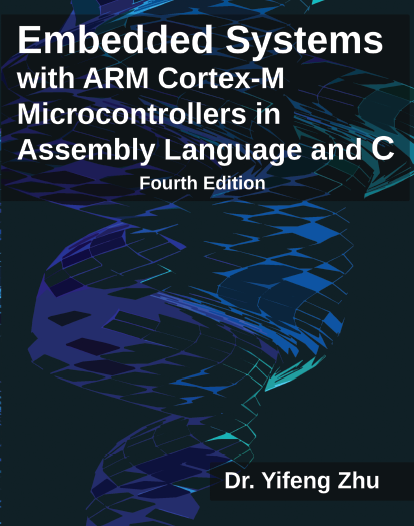Tutorial 1: Create a project in Keil v5 (pdf)
|
Tutorial 2: Debugging in Keil v5 (pdf)
|
Tutorial 3:Clock configuration of STM32L4 processors
|
Tutorial 4: Printing messages via UART through ST-Link V2.1
|
Tutorial 5: How to fix common errors?
|
Tutorial 6: Logic analyzer in Keil
|
|
Lecture 1: Why do we use Two's Complement?
|
Lecture 2: Carry and Borrow Flag
|
Lecture 3: Overflow Flag
|
Lecture 4: Pointer
|
Lecture 5: Memory Mapped I/O
|
Lecture 6: GPIO Output: Lighting up a LED
|
Lecture 7: GPIO Input: Interfacing a joystick
|
Lecture 8: LCD
|
Lecture 9: Interrupts
|
Lecture 10: Interrupt Enable and Interrupt Priority
|
Lecture 11: External Interrupts (EXTI)
|
Lecture 12: System Timer (SysTick)
|
Lecture 13: Timer: PWM output
|
Lecture 14: Timer Input Capture
|
Lecture 15: Race Conditions
|
Lecture 16: Volatile Variables
|
Lecture 17: Booting process
|
Lecture 18: Analogy-to-Digital Conversion (ADC)
|
Lecture 19: Floating-Point Unit (FPU)
|
Lecture 20: Fixed Point Numbers
|
Lecture 21: Why learn assembly language
|
Lecture 22: Big Endian and Little Endian
|
Lecture 23: Load and Store Instructions
|
Lecture 24: Addressing mode: pre-index, post-index, and pre-index with update
|
Lecture 25: Arithmetic and Logical Instructions
|
Lecture 26: Updating NZCV bit flags
|
Lecture 27: Branch Instructions
|
Lecture 28: Conditional Execution
|
|
Lecture 29: Calling a subroutine
|
Lecture 30: Passing Arguments to a Subroutine
|
Lecture 31: Preserving registers in a Subroutine
|
Lecture 32: Mixing C and Assembly
|

